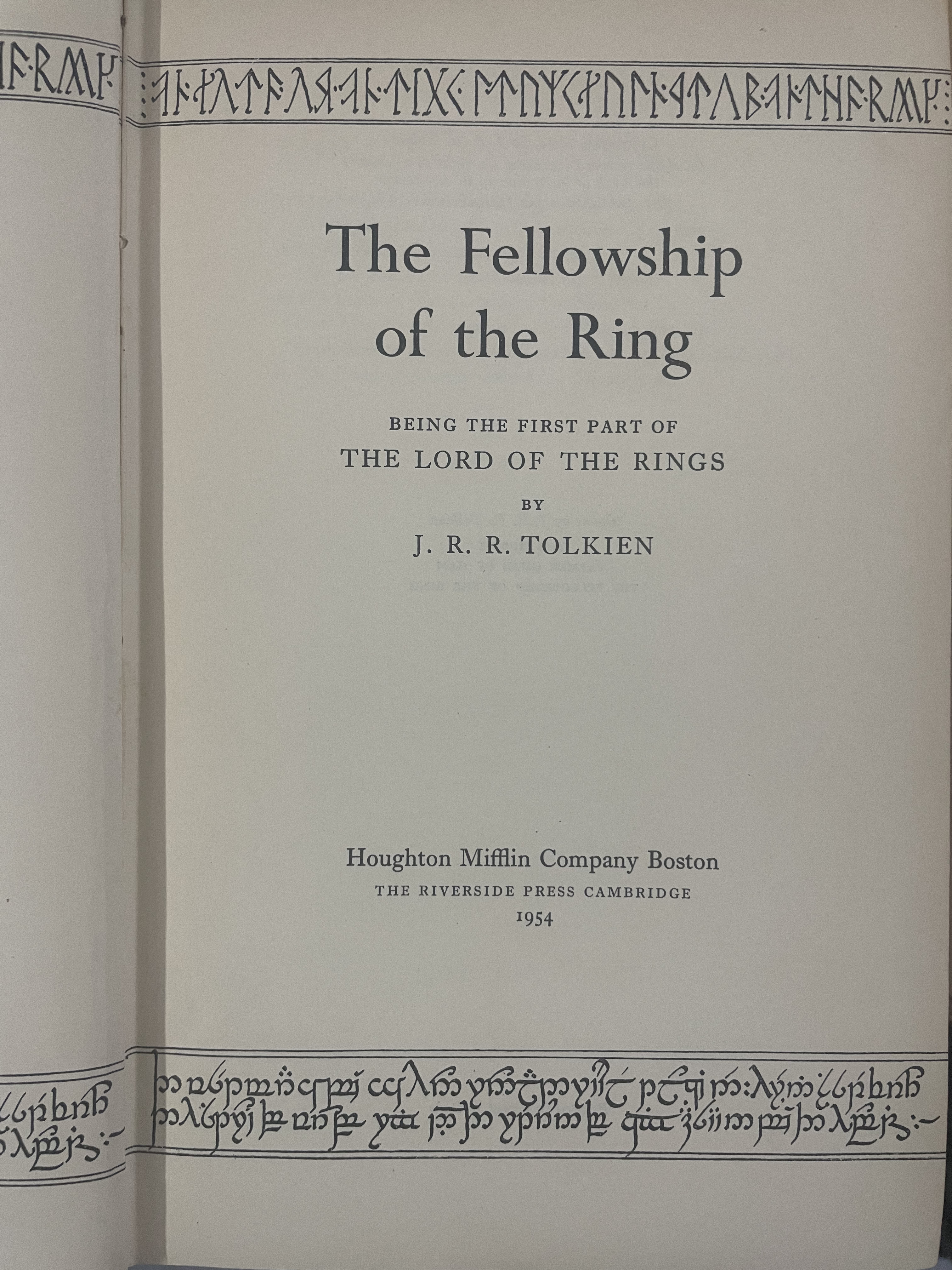The Fellowship of The Rings

About
Summary
Exquisite
TOC
Details
Related
URL
Images
Overview
The Fellowship of the Ring, published in 1954, is the first volume in J.R.R. Tolkien's epic fantasy trilogy, The Lord of the Rings. Set in the fictional world of Middle-earth, the story follows Frodo Baggins, a hobbit from the Shire, as he embarks on a perilous quest to destroy the One Ring, an artifact of immense power sought by the Dark Lord Sauron. With the help of a fellowship of companions, Frodo must journey to Mount Doom in Mordor, the only place where the Ring can be unmade, to save Middle-earth from Sauron's dominion.The Fellowship of the Ring is a tale of good versus evil, where the fate of Middle-earth rests on the shoulders of a humble hobbit. The narrative begins in the Shire, a peaceful land inhabited by hobbits, and gradually expands to encompass a vast and diverse world filled with elves, dwarves, men, and other fantastical creatures. Tolkien's richly detailed world-building, combined with his exploration of universal themes, creates a compelling narrative that has captivated readers for generations. The novel explores the corrupting influence of power, the importance of friendship and sacrifice, and the triumph of good over evil.
Key Themes
The Corrupting Influence of Power: The One Ring is a symbol of absolute power, and its corrupting influence is a central theme. Characters like Boromir and even Galadriel are tempted by the Ring's promise of strength, highlighting the dangers of unchecked ambition.
The Importance of Friendship and Loyalty: The bonds of friendship and loyalty are essential to the success of the quest. The Fellowship is formed by individuals from different races and backgrounds, united by their commitment to a common cause. The loyalty of Sam to Frodo is a prime example of the strength and resilience of true friendship.
The Triumph of Good Over Evil: The overarching theme is the battle between good and evil. Despite the overwhelming power of Sauron, the forces of good, represented by the Fellowship, stand against him. The story emphasizes the importance of hope, courage, and sacrifice in the face of darkness.
The Power of the Small: The hobbits, despite their small stature and unassuming nature, play a crucial role in the quest. Tolkien suggests that even the smallest individuals can have a significant impact on the world.
Environmentalism: Though not explicitly stated, Tolkien’s love of nature shines through, with the idyllic Shire and the majestic forests of the elves representing the beauty that is worth saving from the encroaching darkness.
Cultural Significance
The Fellowship of the Ring has had a profound impact on popular culture, shaping the fantasy genre and inspiring countless works of literature, art, music, and film. Tolkien's richly detailed world-building and compelling characters have resonated with readers for generations, making The Lord of the Rings one of the most beloved and influential fantasy series of all time. The book's themes of good versus evil, friendship, and the importance of standing up for what is right have also resonated with readers from diverse backgrounds.
Effects on Society
The Fellowship of the Ring has had a lasting effect on society, influencing the way people think about heroism, leadership, and the importance of community. The book's environmental themes have also contributed to a growing awareness of the need to protect the natural world. Moreover, the success of The Lord of the Rings has led to a greater appreciation for fantasy literature and its ability to explore complex social and ethical issues.
Title
The Fellowship of The Rings
Author
J R R Tolkien
Name of Publisher
The Riverside press Cambridge
Publish Date
1954
Vintage
1948-2000
Number of Pages
423
Category
Literary
Sub Category
Drama
Rarity
RARE
